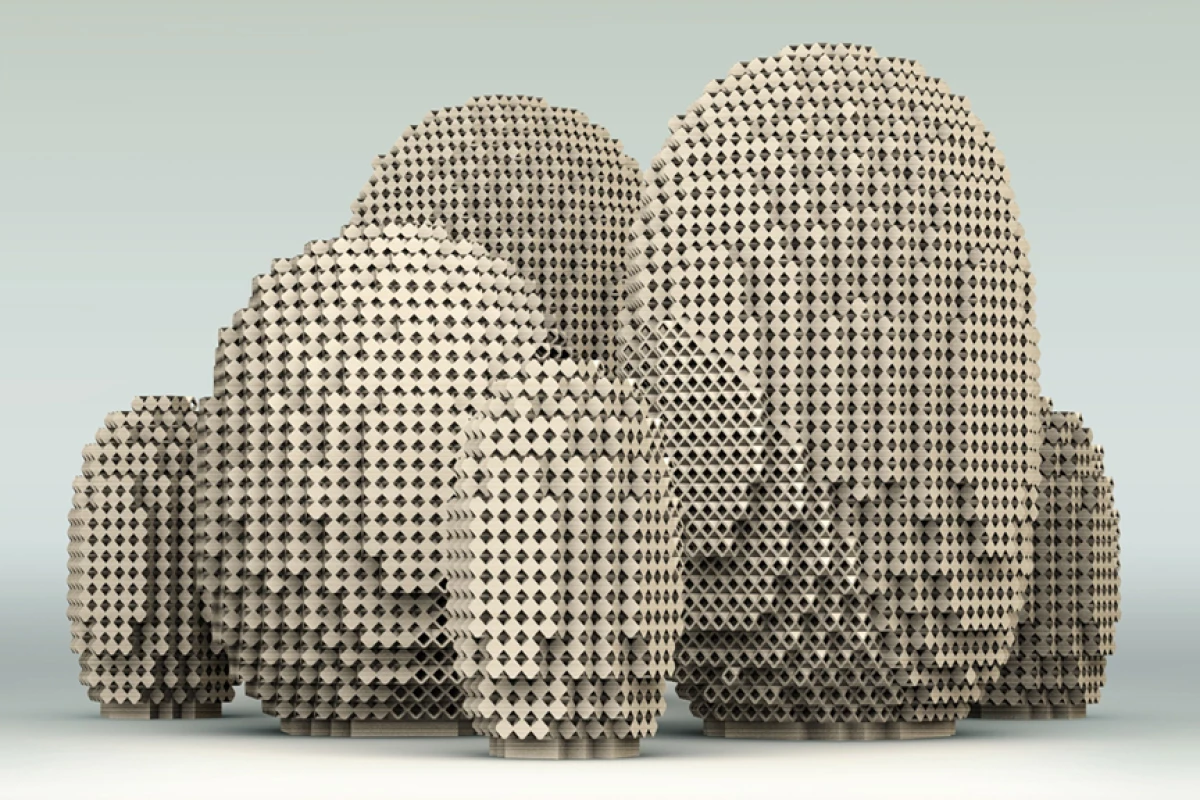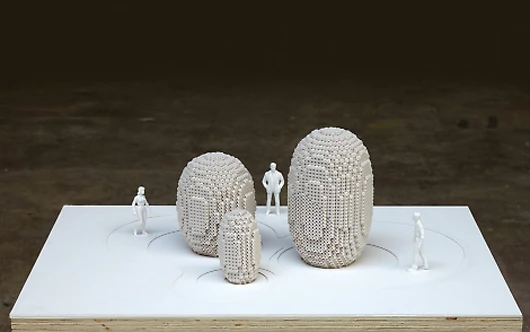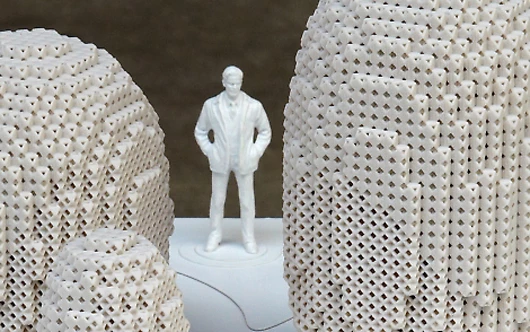The lack of cooling in large open areas inevitably sends people scurrying for air-conditioned buildings on hot days. Taking a leaf from traditional Islamic architecture that dealt with the harsh desert climate with Mashrabiyas – a projecting latticework window that provides shade from the hot sun while allowing cool air from the street to flow through – London-based design firm PostlerFeruson has designed a kind of three dimensional Mashrabiya that can cool the immediate area in an energy-free way.
The three-dimensional cooling towers, called Microclimates, are made from sand using a 3D-printing technique developed by UK company d-shape that takes a CAD file and deposits sand, along with an inorganic binder, in layers to build a three-dimensional structure from the bottom up. By extending the latticework design in three dimensions results in the internal structure of the towers having a large internal surface area. This, coupled with water fed into the top of the structures, efficiently cools the air passing through it using evaporative cooling.

As the name suggests, the Microclimates produce a cooling effect in their immediate vicinity, making them an energy efficient way to cool public places. They also look a lot nicer than an industrial air-conditioning system and PostlerFeruson says they can easily be moved around to different locations.
Via inhabitat







